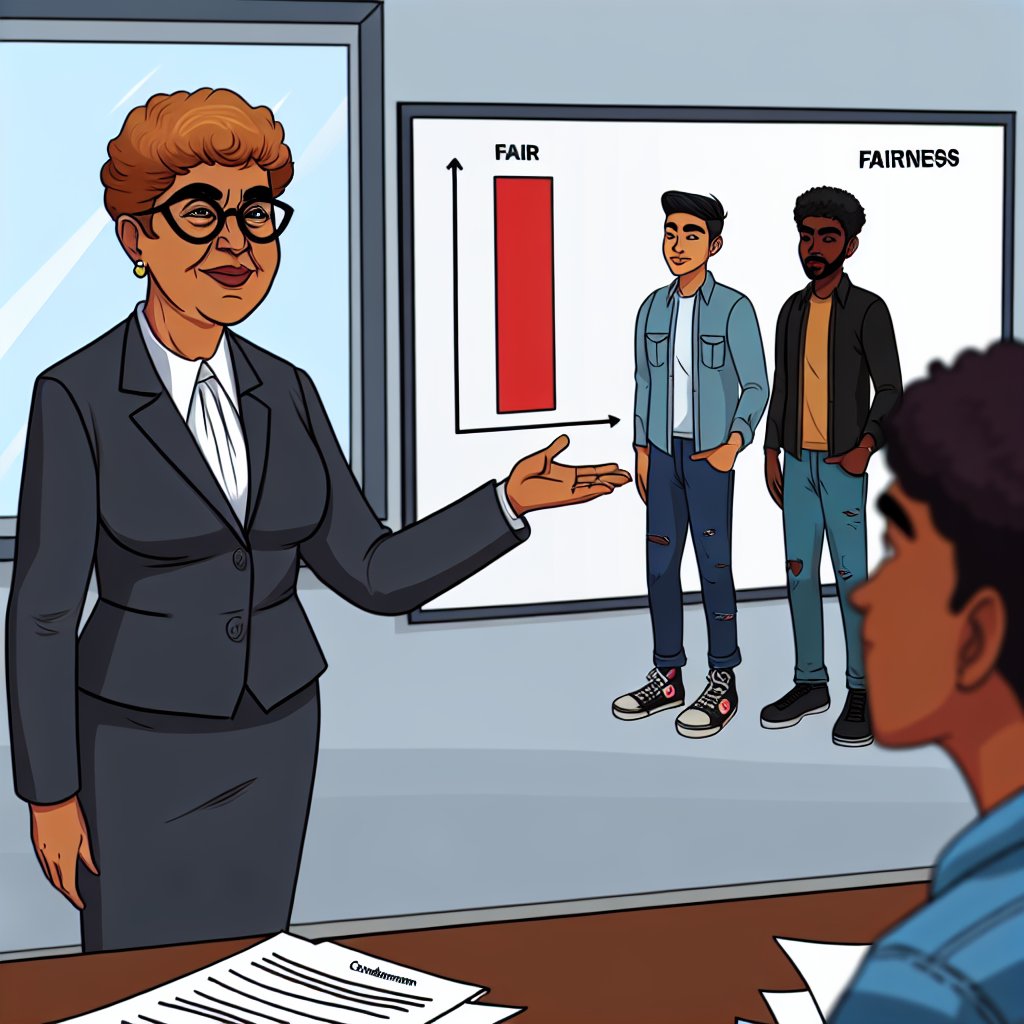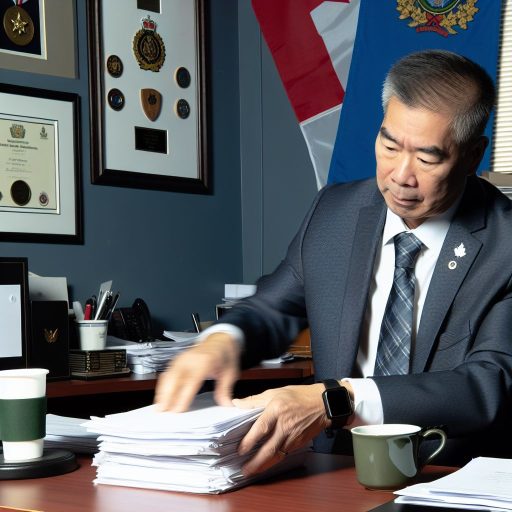Overview of Ombudsman Roles in Various Sectors
Introduction to Ombudsmen
Ombudsmen serve as impartial intermediaries in disputes.
They aim to resolve conflicts fairly and effectively.
This role spans various sectors, each with unique challenges.
Ombudsmen in Government
Government ombudsmen investigate citizen complaints against public agencies.
They uphold accountability and ensure fair treatment of individuals.
For instance, the Office of the Ombudsman in New Zealand addresses grievances against government entities.
These officials typically recommend remedies and improvements.
Furthermore, they promote transparency within government operations.
Ombudsmen in Education
In educational settings, ombudsmen mediate disputes between students and institutions.
They address issues ranging from academic integrity to student conduct.
Moreover, they help create a supportive learning environment.
For example, the university ombudsman assists in resolving conflicts amicably.
Educational ombudsmen also provide guidance on policies and procedures.
Ombudsmen in Healthcare
Healthcare ombudsmen assist patients in navigating complex medical systems.
They address complaints regarding treatment and patient rights.
For instance, the Patient Ombudsman in Canada investigates healthcare service complaints.
These professionals also work to improve patient experiences and outcomes.
Additionally, they promote communication between patients and providers.
Ombudsmen in Business
In the private sector, ombudsmen facilitate fair business practices.
They handle employee grievances and customer complaints effectively.
For example, some corporations have internal ombudsmen to address workplace issues.
These roles help maintain a healthy organizational culture.
Furthermore, they enhance trust between employees and management.
The Benefits of Ombudsman Services
Employing an ombudsman improves conflict resolution processes.
It fosters a culture of accountability and fairness within organizations.
Unlock Your Career Potential
Visualize a clear path to success with our tailored Career Consulting service. Personalized insights in just 1-3 days.
Get StartedMoreover, ombudsmen can identify systemic issues and suggest improvements.
Their presence often leads to higher satisfaction among those involved in disputes.
Ultimately, ombudsmen play a crucial role in promoting fairness in various sectors.
Historical Context: The Evolution of Ombudsman Institutions
Origins of Ombudsman Institutions
The concept of the ombudsman originated in Sweden in the 18th century.
King Charles XII appointed the first ombudsman to oversee government actions.
Thus, the role aimed to resolve conflicts between citizens and the state.
This initiative marked a significant step toward public accountability.
International Expansion of the Ombudsman Role
Other countries quickly adopted the ombudsman model following its success in Sweden.
Finland established its ombudsman in 1919, focusing on legal rights protection.
In the 20th century, numerous nations integrated ombudsman offices into their governance.
This expansion reflected a growing commitment to fair dispute resolution.
Modern Ombudsman Practices
Today, ombudsmen operate in diverse sectors, including public, private, and non-profit.
They work to mediate conflicts and ensure equitable treatment for all parties.
Furthermore, modern ombudsmen employ various methods, including investigation and advocacy.
Thus, they promote transparency and accountability in institutions.
Challenges Faced by Ombudsman Institutions
Despite their importance, ombudsmen encounter significant challenges.
Lack of authority can limit their influence in resolving disputes.
Additionally, limited resources can hinder their operational effectiveness.
These challenges emphasize the need for continuous reform and adaptation.
Key Principles of Fairness and Impartiality in Dispute Resolution
Understanding Fairness in Dispute Resolution
Fairness is a cornerstone of effective dispute resolution.
It ensures that all parties feel heard and respected.
Consequently, fairness fosters trust in the resolution process.
Additionally, impartiality guarantees that decisions are made without bias.
This approach promotes equal treatment among all involved parties.
Role of Ombudsmen
Ombudsmen play a vital role in facilitating fairness.
They act as neutral third parties in disputes.
Through their involvement, ombudsmen help clarify misunderstandings.
Moreover, they provide guidance in navigating complex issues.
This assistance leads to more equitable outcomes.
Key Principles of Impartiality
Impartiality requires the absence of favoritism.
It ensures that decision-makers remain neutral.
Furthermore, impartiality demands transparency in the resolution process.
This transparency helps build trust among the disputing parties.
Ultimately, impartiality enhances the credibility of resolutions.
Promoting Open Communication
Open communication is essential for fairness.
Ombudsmen encourage dialogue between disputing parties.
This dialogue allows for differing perspectives to be shared.
Additionally, it helps identify potential areas of conflict.
By fostering communication, ombudsmen facilitate constructive discussions.
Encouraging Collaborative Solutions
Collaboration leads to better resolution outcomes.
Ombudsmen encourage parties to work together to find solutions.
This cooperative approach fosters ownership of the outcomes.
Furthermore, collaborative solutions often result in higher satisfaction rates.
Parties tend to value outcomes they helped create.
Providing Confidentiality
Confidentiality supports open discussions during disputes.
Parties are more willing to share sensitive information when assured confidentiality.
This trust allows for deeper exploration of the issues at hand.
Moreover, confidentiality protects parties from potential repercussions.
Ultimately, it creates a safe environment for resolution.
Explore Further: Path to Becoming a Veterans Affairs Officer in Canada
The Ombudsman’s Process: Steps from Complaint Filing to Resolution
Initial Complaint Filing
The process begins when an individual files a complaint.
Ombudsmen provide clear guidelines for submitting complaints.
They typically require basic information from the complainant.
This includes the nature of the dispute and relevant details.
Acknowledgment of Complaint
Upon receiving a complaint, the ombudsman acknowledges it promptly.
This acknowledgment reassures the complainant their issue is being addressed.
Furthermore, it provides an estimated timeline for the process.
Investigation Process
The ombudsman initiates a thorough investigation of the complaint.
This often involves gathering evidence and interviewing parties involved.
Confidentiality is maintained to protect sensitive information.
All findings are documented meticulously during this stage.
Seeking Informal Resolution
After gathering information, the ombudsman seeks an informal resolution.
This may involve mediation or facilitated discussions.
The goal is to foster communication between the parties.
Successful negotiations can lead to a resolution without further escalation.
Formal Recommendations
If informal resolution fails, the ombudsman issues formal recommendations.
These recommendations are based on the investigation findings.
They aim to address the issues in a fair and just manner.
Parties are encouraged to consider these recommendations seriously.
Monitoring Implementation
Once recommendations are provided, the ombudsman monitors their implementation.
This step ensures accountability and follow-through from all parties.
Regular updates are communicated to the complainant throughout this phase.
Final Report
The process concludes with a final report summarizing the findings.
This report includes the adopted resolutions and any pending actions.
It serves to inform all stakeholders of the resolution process outcomes.
The ombudsman’s role ensures transparency and continued dialogue.
Discover More: Why Veterans Affairs Officers Matter in Canadian Society
Case Studies: Successful Ombudsman Interventions in Disputes
Education Sector: Resolving Grievances
In a notable case, an ombudsman intervened in a dispute between a school and a parent.
The parent had raised concerns about the school’s disciplinary measures.
Through mediation, the ombudsman facilitated a dialogue.
This led to a mutual understanding of expectations and policies.
As a result, the school revised its procedures.
Furthermore, the parent felt heard and valued in the process.
Healthcare: Addressing Patient Complaints
In the healthcare sector, an ombudsman addressed a patient’s complaints about care quality.
The patient had expressed frustration over a delayed diagnosis that caused worsening conditions.
After reviewing the case, the ombudsman organized a meeting with health staff.
This meeting allowed for open communication regarding treatment protocols.
The healthcare provider took steps to improve training and response times.
Consequently, the patient received a formal apology and acknowledgment of their concerns.
Corporate Environment: Mediation in Workplace Disputes
In a corporate environment, an ombudsman intervened in a conflict between two departments.
The conflict arose from miscommunication regarding project responsibilities.
The ombudsman facilitated a series of meetings to clarify roles.
These meetings focused on fostering collaboration and teamwork.
After intervention, both departments reported improved communication.
Ultimately, this led to a smoother project execution and greater employee satisfaction.
Local Government: Resolving Community Conflicts
An ombudsman played a critical role in a dispute involving a local community center.
Residents were divided over the center’s funding and operational hours.
To address this, the ombudsman organized a town hall meeting.
This platform enabled residents to voice their concerns openly.
The resultant feedback led to a compromise on funding allocations.
Furthermore, community members gained a sense of ownership and inclusivity in decisions.
Explore Further: Role of Correctional Officers in Rehabilitation Programs

Challenges Faced by Ombudsmen in Upholding Fairness
Pressure from Stakeholders
Ombudsmen often face significant pressure from various stakeholders.
These pressures can influence their decision-making processes.
In many cases, stakeholders demand immediate resolutions.
This urgency can hinder thorough investigations.
Furthermore, conflicting interests complicate their roles.
Lack of Resources
Many ombudsman offices operate with limited resources.
This limitation affects their ability to take on cases.
Resource shortages can lead to long response times.
Additionally, inadequate funding impacts training opportunities.
Such constraints hinder their overall effectiveness.
Maintaining Neutrality
Upholding neutrality is a critical challenge for ombudsmen.
They must remain impartial while addressing disputes.
Personal biases can unintentionally affect their judgments.
Moreover, the need to satisfy multiple parties complicates matters.
Therefore, maintaining a neutral stance is essential but challenging.
Communication Barriers
Clear communication is vital in dispute resolution.
However, misunderstandings often arise between parties.
Different communication styles can exacerbate these issues.
Additionally, language differences may hinder effective dialogue.
These barriers can delay resolutions and create frustration.
Legal Limitations
Ombudsmen operate within specific legal frameworks.
These laws may limit their authority in certain situations.
Consequently, they might not be able to enforce resolutions.
This limitation can frustrate those seeking justice.
Understanding these legal boundaries is crucial for ombudsmen.
Uncover the Details: Environmental Officer Salary and Job Outlook in Canada
The Importance of Transparency and Accountability in Ombudsman Work
Defining Transparency in Ombudsman Work
Transparency involves openness in processes and decisions made by the ombudsman.
This clarity builds trust with the public and stakeholders.
When people understand how decisions are made, they feel included in the process.
Ways Ombudsmen Promote Transparency
Ombudsmen can issue regular reports about their findings and activities.
These reports can detail the nature of complaints received and resolutions reached.
Furthermore, they may hold public forums to discuss common issues.
Using digital platforms to share information can enhance accessibility.
Understanding Accountability
Accountability ensures that ombudsmen are responsible for their actions.
It means they must answer for their decisions and processes.
Accountability is critical for maintaining integrity within the office of the ombudsman.
Establishing Accountability Measures
To ensure accountability, ombudsmen often undergo regular evaluations.
These assessments can be conducted by an independent body.
Additionally, feedback from the public can serve as a vital form of accountability.
Implementing a complaint mechanism allows citizens to voice concerns about the ombudsman’s conduct.
The Role of Oversight Bodies
Oversight bodies play a crucial role in maintaining both transparency and accountability.
They can audit the actions of the ombudsman to ensure compliance with regulations.
Moreover, they help ensure that ombudsman practices align with ethical standards.
Benefits of Transparency and Accountability
Enhanced transparency and accountability foster public confidence in the ombudsman.
When the community trusts the ombudsman, they are more likely to seek help.
Moreover, these principles help prevent abuse of power within the office.
Ultimately, they contribute to more effective dispute resolution processes.
Future Trends: The Role of Technology in Ombudsman Services
Introduction to Technology Integration
Technology is reshaping how ombudsmen operate in various sectors.
It enhances accessibility and improves communication between parties.
Additionally, technological tools streamline the dispute resolution process.
Benefits of Digital Tools
Digital platforms offer numerous advantages for ombudsman services.
They increase efficiency by automating repetitive tasks.
Moreover, they facilitate real-time updates and tracking of cases.
Online Complaint Filing Systems
Modern ombudsmen provide online portals for filing complaints.
This feature simplifies the submission process for complainants.
It also ensures that complaints reach the relevant ombudsman promptly.
Data Analytics for Enhanced Decision-Making
Data analytics helps ombudsmen identify trends and patterns in disputes.
This information is crucial for proactive problem-solving.
Furthermore, it allows for targeted improvements in service delivery.
Virtual Mediation and Resolution
Virtual mediation is becoming more common in dispute resolution.
This method enables participants to engage without geographical constraints.
Consequently, it expands access to mediation services for more individuals.
Tools for Virtual Meetings
Platforms like Zoom and Microsoft Teams facilitate remote discussions.
These tools enhance relationship-building among parties involved.
Moreover, they create a comfortable environment for open communication.
Challenges and Considerations
Despite the benefits, there are challenges to consider.
Security and privacy are major concerns when using technology.
It is essential for ombudsmen to ensure that data is protected.
Future Innovations
Looking ahead, AI technologies may become instrumental in ombudsman services.
AI chatbots can provide immediate assistance to users.
This development will enhance the user experience significantly.
Smart Algorithms for Case Evaluation
Smart algorithms may assist in evaluating the merits of cases.
These algorithms can prioritize cases based on urgency and complexity.
Consequently, ombudsmen can allocate resources more effectively.
Embracing Change
Embracing technology is crucial for the future of ombudsman services.
It allows ombudsmen to enhance service quality and efficiency.
Ultimately, this leads to fairer outcomes in dispute resolution.
Additional Resources
ACCC+commissioned+report+-+The+impact+of+digital+platforms+ …
The Procurement Ombudsman’s 2022-2023 Annual Report – Annual …




